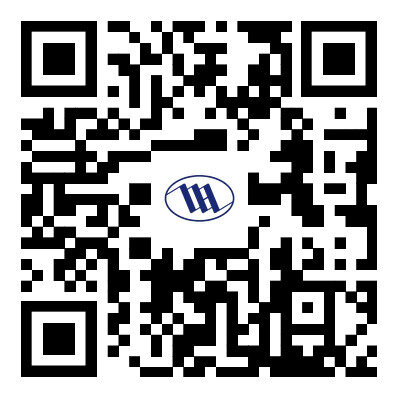Health & Safety Policy
Health & Safety Policy
JIANGSU IL-HEUNG AUTO LIGHT CO .,LTD understands that a safe and healthy working environment can improve the quality of products and services, promote production, improve employee retention and morale, and help reduce work-related injuries and illnesses.
The Code has been drafted with reference to recognized management systems such as ISO 45001 and the ILO Guidelines for Occupational Safety and Health. JIANGSU IL-HEUNG AUTO LIGHT CO .,LTD health and safety guidelines are:
1) Machine safety protection
Production machinery and other machinery should be assessed for safety hazards. Mechanical physical guards, interlocks, and barriers that may cause injury to employees should be fitted and properly maintained.
2) Industrial hygiene
Chemical, biological and physical hazards to employees should be identified, assessed and controlled according to a "hierarchical control" approach. If any hazard is identified, the employer should seek opportunities to eliminate or reduce the potential hazard or, if this is not possible, to control the potential hazard through appropriate design, engineering and management. When hazards cannot be adequately controlled by these measures, employees should be provided with appropriate, well-maintained personal protective equipment and adequate first aid supplies or facilities in the workplace. The protection plan should include training and education related to these hazards.
3) Occupational safety
Potential health and safety hazards (e.g., chemical, electrical and other energy, fire, vehicle and fall hazards) that employees may encounter should be identified, assessed, and controlled through proper design, engineering, and administrative controls, preventative maintenance, and safety workflows, and ongoing safety training. Mitigation should be carried out using "hierarchical control" (including hazard elimination, use of alternative processes, alternative materials, etc.), and if this cannot be effectively controlled, employees should be provided with appropriate, well-maintained personal protective equipment (PPE) and ongoing training and education on the risks that may result from these hazards.
4) Emergency preparedness
Emergency drills must be conducted at least once a year, or as required by local law, whichever is more stringent. Potential emergencies and emergencies should be identified and assessed and their impact minimized through the implementation of emergency response plans and response procedures, including emergency reporting, employee notification and evacuation procedures, staff training and drills, appropriate fire detection and extinguishing equipment, clear and clear escape routes, contact information for emergency personnel, adequate egress facilities and recovery plans. Such plans and procedures should minimize damage to life, the environment and property.
5) Work-related injuries and illnesses
Procedures and systems should be put in place to prevent, manage, track, and report work-related injuries and illnesses, including provisions to encourage employees to report, classify and record work-related injury and illness cases, provide necessary medical care, investigate cases and take corrective action to eliminate their source of accidents, and help employees return to work.
6) Human Factors Engineering
The impact of physically demanding work, including manual material handling and heavy lifting, prolonged standing, and highly repetitive or forceful assembly work, should be identified, assessed, and controlled. Through the rational evaluation and integration of human factors engineering, we can increase personnel efficiency and reduce industrial accidents.
7) Public health, diet, and accommodation
Employees should be provided with clean restroom facilities, potable water and hygienic kitchen utensils, food storage facilities, and utensils. Staff dormitories should be kept clean and safe, with appropriate emergency exits, hot water for bathing, adequate lighting, heating and ventilation, separate lockers for personal and valuables, and reasonable private spaces with easy access.
8) Health & Safety Communication
Employees shall be provided with workplace health and safety information and training in their native language or in a language they can understand to correctly recognize workplace hazard signs to which they are exposed, including but not limited to mechanical, electrical, chemical, fire, and physical hazards. Health and safety information should be clearly posted at the facility or in a conspicuous place where employees can see it. Employees should be provided with regular training before and during the job before the start of work. Employees should be encouraged to make health and safety-related advice and protected from retaliation.
净零排放措施

企业碳足迹
为了更好地了解和监测企业对气候变化的影响,以企业碳足迹的形式建立公司层面的温室气体排放清单非常重要。因此,自2020年起,我们每年在全球范围内计算企业碳足迹(CCF),包括范围1、2和3的上游排放量。

企业碳足迹
为了更好地了解和监测企业对气候变化的影响,以企业碳足迹的形式建立公司层面的温室气体排放清单非常重要。因此,自2020年起,我们每年在全球范围内计算企业碳足迹(CCF),包括范围1、2和3的上游排放量。

企业碳足迹
为了更好地了解和监测企业对气候变化的影响,以企业碳足迹的形式建立公司层面的温室气体排放清单非常重要。因此,自2020年起,我们每年在全球范围内计算企业碳足迹(CCF),包括范围1、2和3的上游排放量。

企业碳足迹
为了更好地了解和监测企业对气候变化的影响,以企业碳足迹的形式建立公司层面的温室气体排放清单非常重要。因此,自2020年起,我们每年在全球范围内计算企业碳足迹(CCF),包括范围1、2和3的上游排放量。

